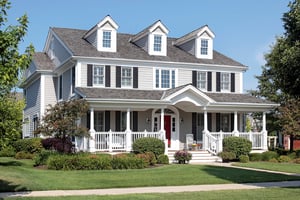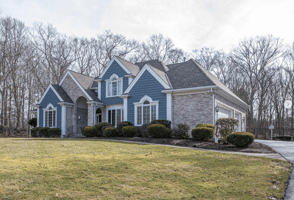As we approach the end of October and usher in the month of November, the changing seasons require...
Proper Attic Ventilation for Your Home
Proper ventilation is key when it comes to your roof system. A properly vented attic can keep your energy bills down while extending the life of your roof.
Why Ventilation Matters
It allows fresh air to reach the attic and stale air to exit through the roof. This is most commonly accomplished with the placement of ventilation at the bottom of your attic space and at the top Soffits or eaves allow for air intake at the bottom of your roof system and the top peaks or ridges allow for exhaust.
The circulation of air will keep your attic space at a uniform temperature and keep humidity levels down. For this process to work effectively, a proper ventilation system should be in place. Intake and exhaust should be balanced.
Balanced Ventilation
This is achieved when the same amount of airflow from intake to exhaust. The air in your attic needs to be able to escape to create the best environment for your roof. Natural air pressure and a properly vented roof create a push-pull effect that can prevent stagnant air at the bottom of your attic space. Think of the effect opening only one window in your house on a breezy day feels like, compared to two windows on either side of your house. Balanced ventilation works the same way.
Attic Ventilation Helps Keep Cooling Costs Low
Hot air that remains in your attic from lack of proper roof ventilation can reach higher temperatures and work its way back into your living space. This causes your AC units, fans, and other energy consuming appliances to work harder. But with proper roof ventilation, the hot air is released out of the home rather than staying trapped inside.
Preventing Cold-Weather Condensation
Effects of winter weather can present challenges for attics that are not properly ventilated. As temperatures drop, warm, moist air rises from your living space and will condense on cold surfaces like a cold roof. Over time, if the air is not released through a properly vented attic space, it will cause a plethora of issues including rotting roof deck, buckling, and rotting. Mold and mildew love this type of environment. But as a homeowner, keeping mold and mildew out of your home and attic space will ease allergies and improve your interior air quality.
Lowering the Likelihood of Ice Dams
Certainteed explains this best.
“During the winter, heat trapped in the attic causes snow on a roof to melt and slide downward toward the eaves and gutters, which are not exposed to the heat from within the attic. When the snow melt reaches these cold areas it can refreeze, creating a buildup that will dam additional snowmelt, which then refreezes. This continual buildup of ice is called an ice dam. This is dangerous because water expands when it freezes, and the expansion of pooled water refreezing can push roofing materials apart and allow water to infiltrate the roof system. If left unchecked, this infiltration can soak through roof decking, and may even make its way inside living spaces to ruin paint, mark ceilings, and stain walls. A properly ventilated attic space, however, will exhaust the heat, remain uniformly cool, and not allow this harmful freeze-thaw cycle to take hold.”
As you can see, proper roof ventilation is the best way to protect your home and your wallet. Proper ventilation is not complicated. It’s a simple solution to keep the integrity of your roof.
What Can Be Done?
Get your complementary roof inspection from a qualified roofing professional.
%20(1).png?width=180&height=90&name=Final%20Business%20Card%20(600%20x%20300%20px)%20(1).png)
%20(1100%20x%20350%20px).png?width=629&height=200&name=Untitled%20(1366%20x%20150%20px)%20(1100%20x%20350%20px).png)
.png?width=50&name=home%2c%20real%20estate%2c%20home%20design%20logo%20(7).png)


